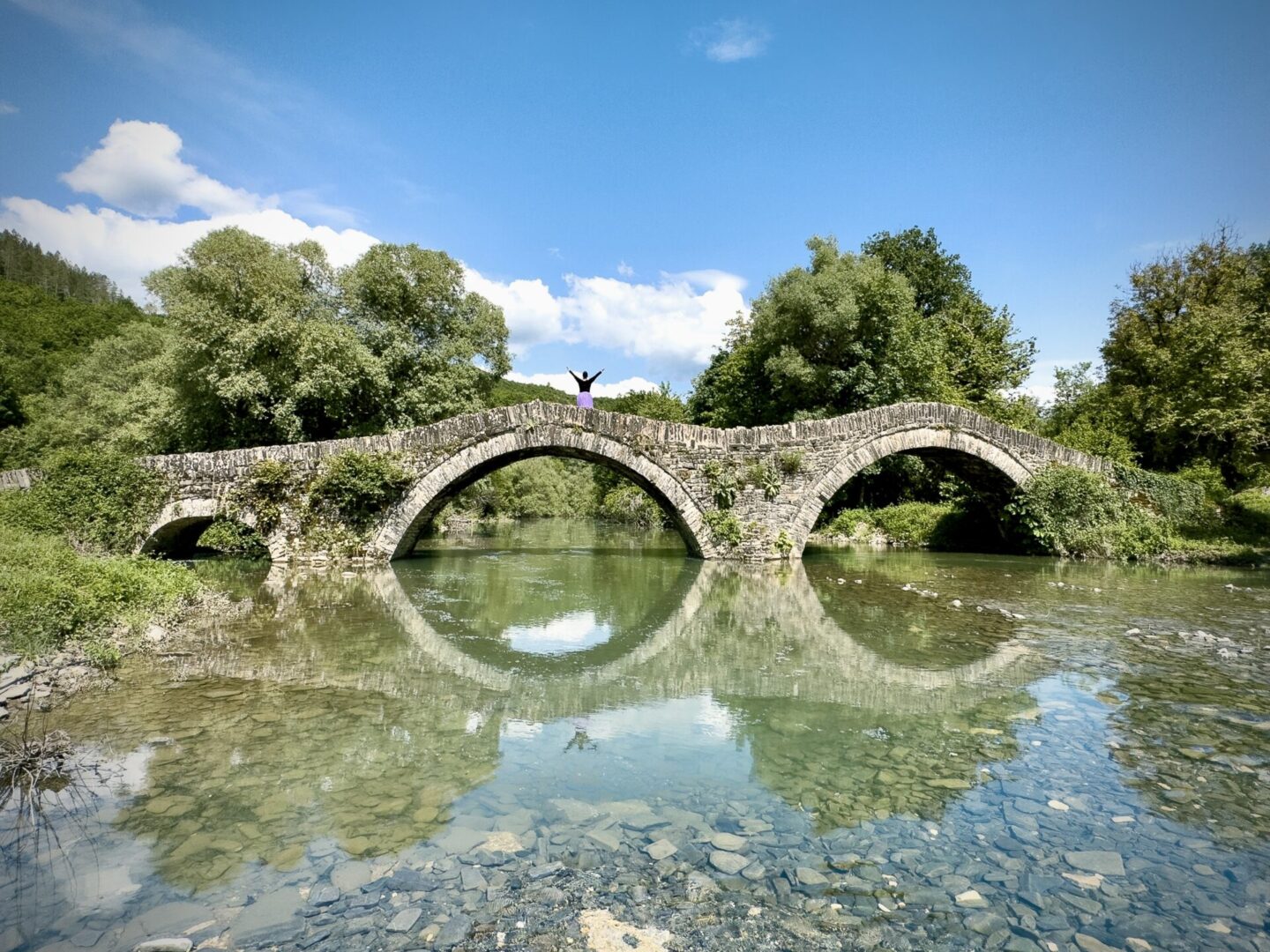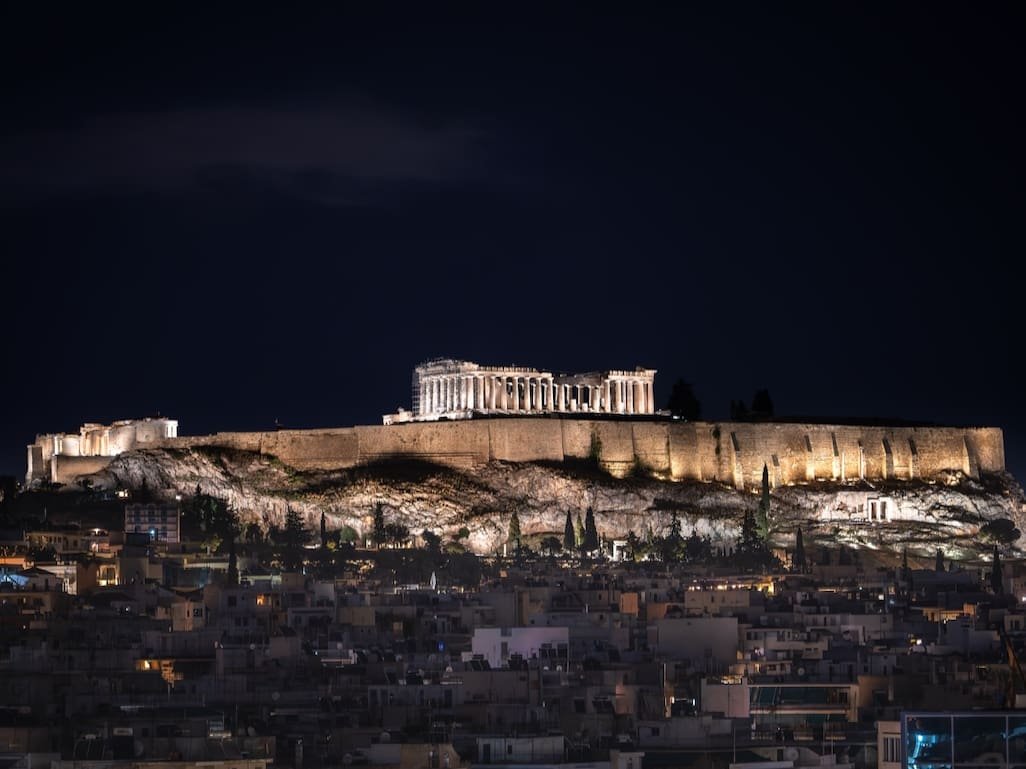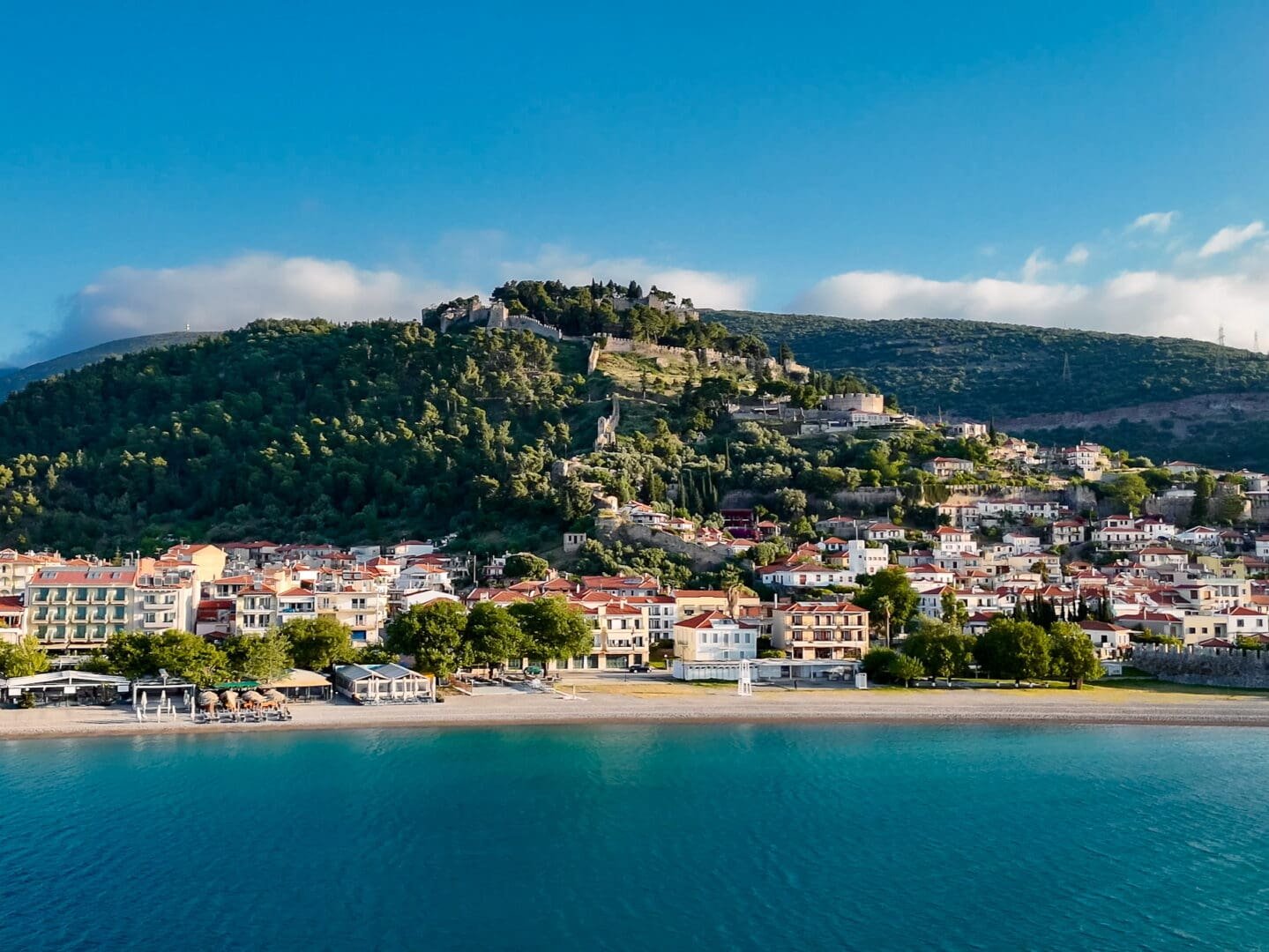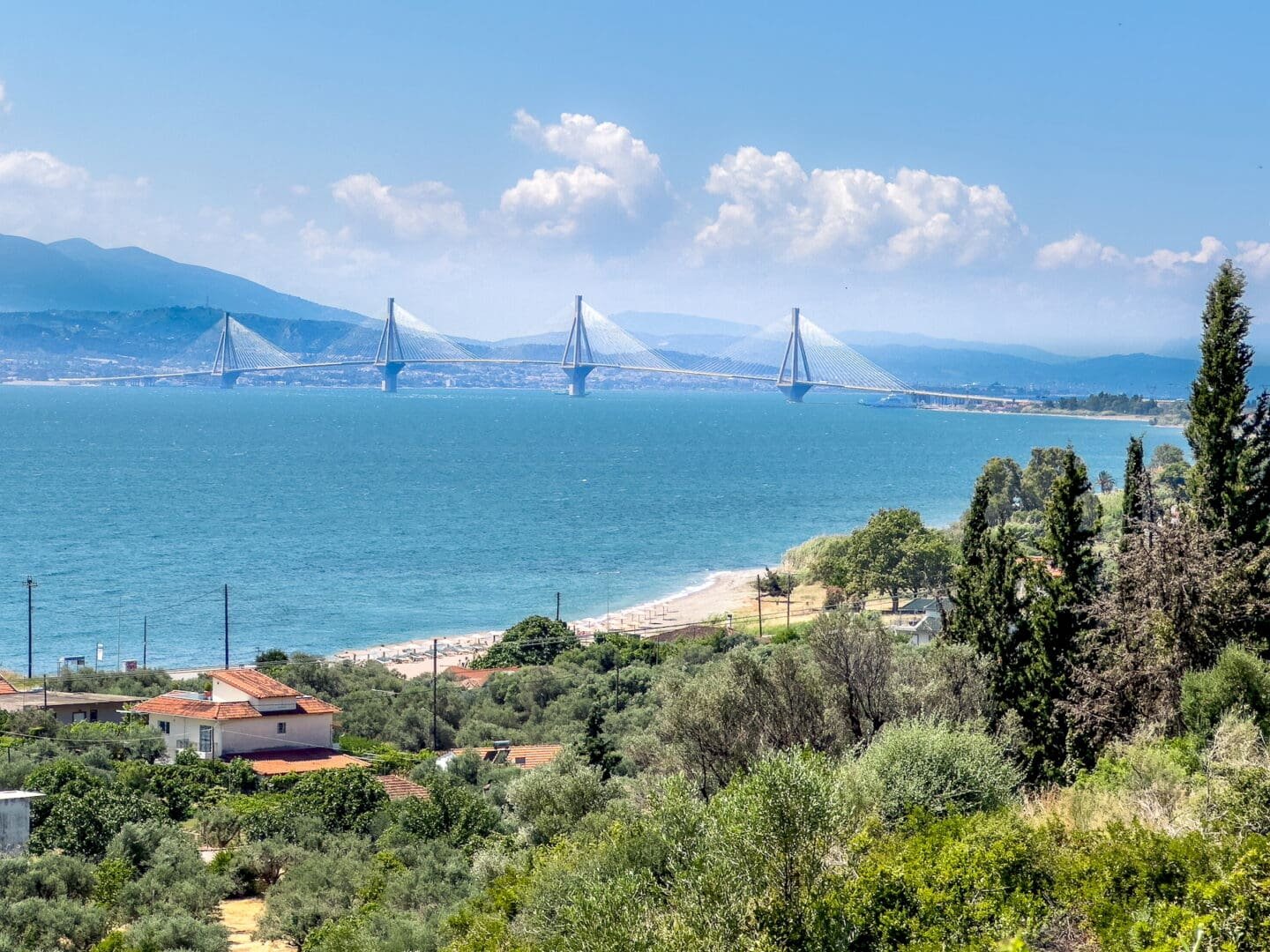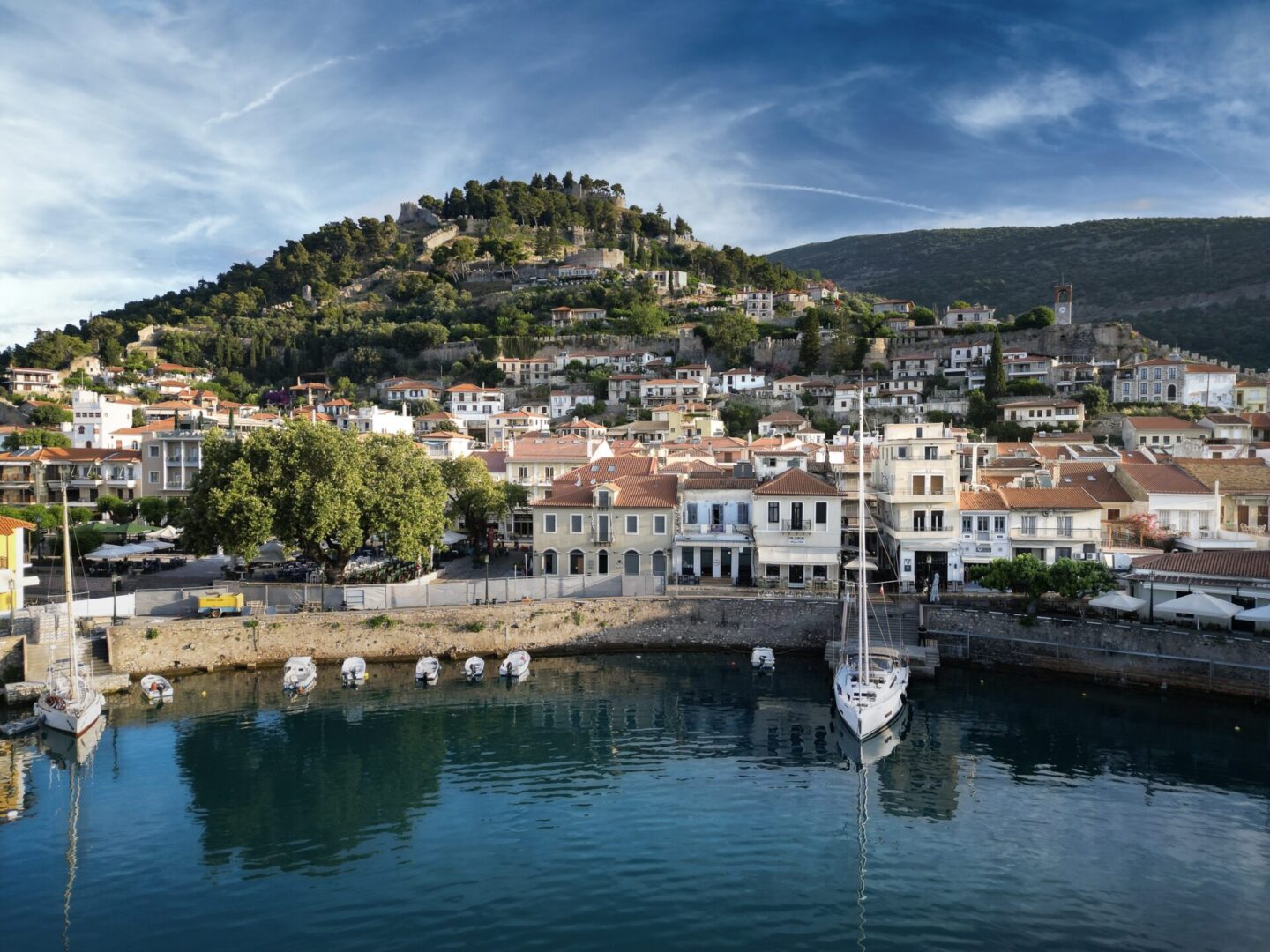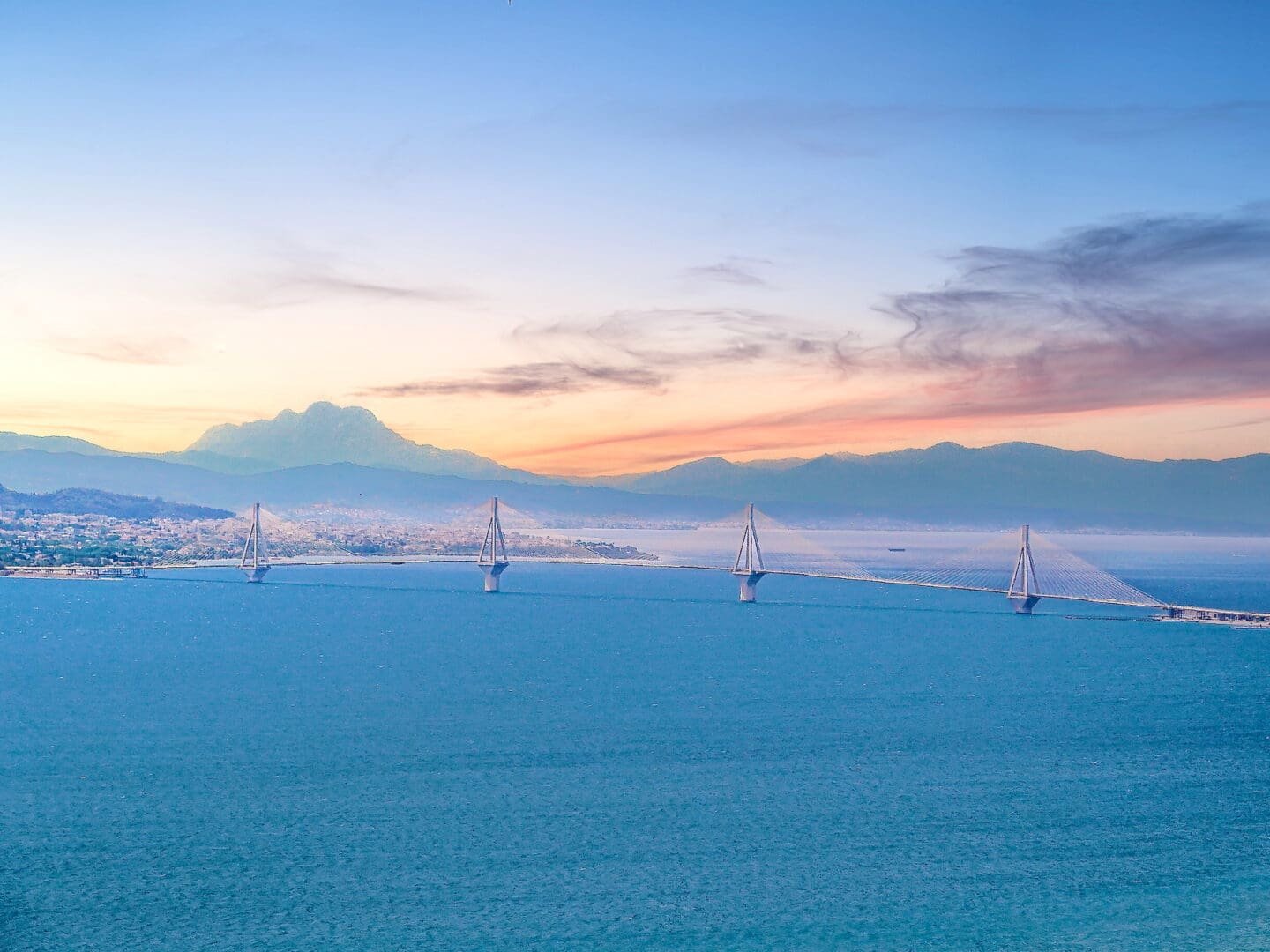
Let’s discover the Rio-Antirio Bridge, a modern engineering masterpiece. It’s the longest bridge in Greece and ranks among the best bridges in the world.
The Rio-Antirio Bridge (Γέφυρα Ρίου–Αντιρρίου), officially named the Charilaos Trikoupis Bridge (Γέφυρα Χαρίλαος Τρικούπης), opened with global fanfare in August 2004 – just in time for the Athens 2004 Summer Olympics.
Since Opening Day, the bridge has served as an important transportation resource, an impressive sightseeing spectacle, and a source of immense Greek pride.
It holds its own with the most beautiful and famous bridges in the world, such as the Golden Gate Bridge in San Francisco, California, and the Harbour Bridge in Sydney, Australia.
Let’s explore together the stunning yet challenging location, fascinating history, and state-of-the-art design and construction that solved several unique engineering problems. And ultimately transformed a 19th-century vision into a 21st-century reality.
You’ll further find a custom interactive map plus travel tips for visiting the Rio-Antirio Bridge. It’s a wonderful and worthy addition to your travel bucket list in Greece.
Ready? Πάμε, let’s go!
When you book or purchase through some links, Spotlight Sojourns may earn a small commission at no extra cost to you. Thanks for using our affiliate links!
Rio-Antirio Bridge Location
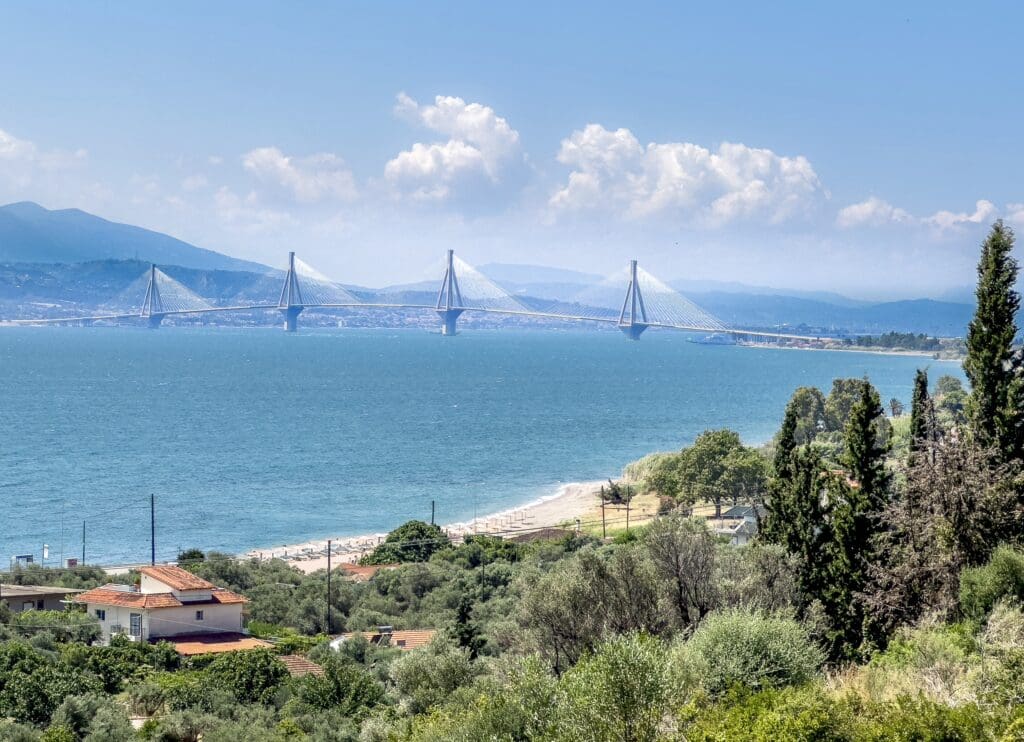
Firstly, the Rio-Antirio Bridge connects two major areas of mainland Greece: The Peloponnese peninsula and Northwestern Greece.
Secondly, the bridge links two ancient ports, each with a medieval fortress: The historic Port of Rio on the western side and the historic Port of Antirio (which means “opposite Rio” in Greek) on the eastern side.
Rio is next to the major metropolis of Patras, the third-largest city in Greece. Antirio is near the hidden gem Nafpaktos, a Venetian jewel of a town in Nafpaktia.
Thirdly, the bridge spans two glorious gulfs: The Gulf of Patras and the Gulf of Corinth, separated by the Strait of Rio.
The dramatic contrast between this modern engineering masterpiece, medieval storybook settings, and a sprawling urban city dazzles and delights.
Rio-Antirio Bridge History
From the mythical past until recent times, travelers could only reach the Peloponnese peninsula either by boat or via the narrow Isthmus of Corinth land bridge.
Greek ferries carried all vehicles, bicyclists, and travelers on a 45-minute journey across the Strait of Rio between the Gulf of Corinth and Patras. And yes, ferries still run daily from the historic ports of Rio and Antirio.
Until that is, the Rio-Antirio Bridge opened to worldwide acclaim on August 7, 2004.
On Opening Day, Olympic torchbearers with the Olympic flame were the first to cross the bridge, running the Olympic Torch Relay for the Athens 2004 Summer Olympics.
At 1.4 miles (2,252 m) full length, the Rio-Antirio Bridge made headlines as the world’s longest cable-stayed bridge.
Twenty years later, the bridge still ranks among the world’s longest cable-stayed bridges and the longest bridge in Greece.
However, the original idea of building this bridge first made headlines more than a century ago.
In the 1880s, Greek Prime Minister Charilaos Trikoupis first envisioned a bridge across the Corinthian Gulf.
Then, it took more than a century before funding, engineering, and technology could transform his inspirational idea into this practical reality.
Accordingly, the 21st-century Charilaos Trikoupis Bridge honors its visionary namesake, 19th-century Prime Minister of Greece Charilaos Trikoupis.
Bridge Design and Bridge Construction
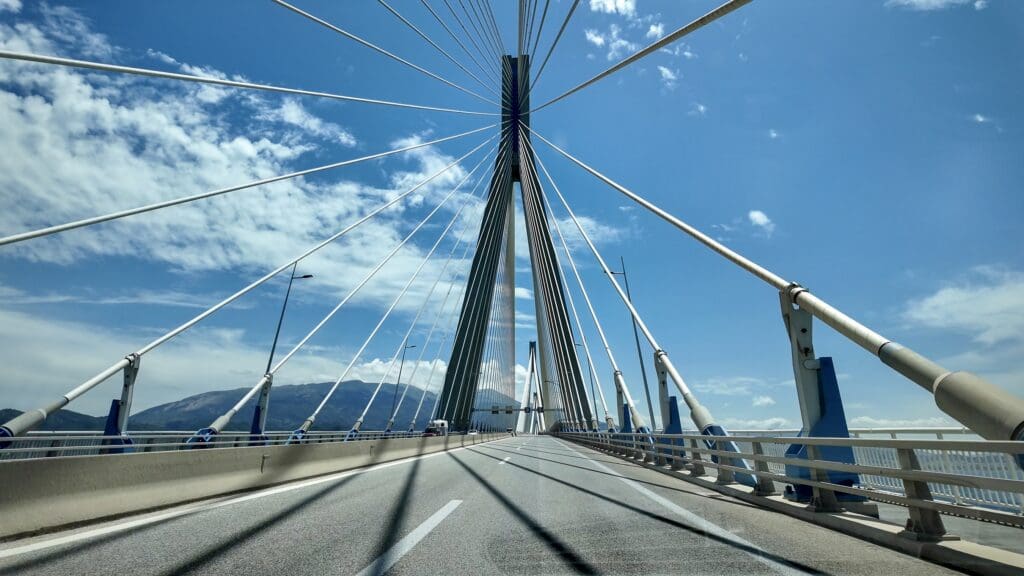
The Rio-Antirio Bridge proves that cement and steel can simultaneously be functional, useful, and pragmatic, as well as sleek, streamlined, and spectacular.
In short, this multi-span cable-stayed bridge is a bold, brilliant, and beautiful combination of masterful modern engineering and awe-inspiring aesthetics.
Several unique engineering problems needed uncommon innovation during the design and construction project. Careful attention continues in the ongoing operations and management process.
Formidable engineering difficulties include deep water – the water depth reaches up to 213 feet (65 m) – significant distance, and constant high winds.
Other challenges include insecure materials like clay, sand, and silt in the seabed, no bedrock, and an unstable site overall because of seismic activity. Earthquake fault lines are present in the region, so earthquakes are a real concern.
The bridge design and construction also must consider heavy traffic, both from vehicles crossing the bridge and from tankers sailing through the Gulf.
Two viaducts lead to the main bridge; the Rio approach is 0.25 miles (392 m), and the Antirio approach is 0.15 miles (239 m) long.
The main bridge comprises a multi-span cable-styled bridge with a fully suspended deck. The main bridge with this continuous deck runs 1.4 miles (2,252 m) in full length.
Five spans anchored to four massive pylons suspend and support the main bridge. Each pylon is sunk deep into the marine foundation from 197 to 213 feet (60 to 65 m) deep.
The bridge provides a total of eight lanes: Two lanes of vehicle traffic, one emergency lane, and a protected pedestrian walkway in each direction.
We recommend this excellent and informative article by Gefyra S.A., the Charilaos Trikoupis Bridge company, for a thorough discussion on bridge design and construction. It’s our firsthand resource for bridge measurements and other specifications.
Bridge Awards and Acclaim
The French firm VINCI undertook the challenging and complex project alongside leading Greek counterparts, companies, and suppliers.
Together, these partners have achieved an unquestionably successful result through their innovative and collaborative approach that continues today.
The achievements certainly reflect engineering innovations and several solutions applied to the bridge design and construction, as well as ongoing operations and management.
International awards recognize and applaud the Rio-Antirio Bridge accomplishments, for example:
- Outstanding Civil Engineering Achievement from the American Society of Civil Engineers (ASCE)
- Outstanding Concrete Structure Award from FIB International (FIB)
- Outstanding Structure Award from the International Association for Bridge and Structural Engineering (IABSE)
The Rio-Antirio Bridge additionally plays a starring role on TV. Its media acclaim includes feature episodes on National Geographic Television Megastructures and Impossible Engineering.
Travel Tips to Visit the Rio-Antirio Bridge
When you plan to visit popular landmarks in Greece, such as the Corinth Canal in the Peloponnese or Ancient Olympia in Western Greece, also plan to visit the Rio-Antirio Bridge.
It’s worth the trip to explore, experience, and be inspired by the dazzling and delightful contrast of monumental modern engineering, medieval fortresses, and magnificent waters.
So, now that the Rio-Antirio Bridge is on your travel bucket list in Greece, here are some travel tips for your visit.
How to Get to the Bridge
A rental car is an efficient and easy way to travel on or off the beaten path in Greece and, of course, get to the Rio-Antirio Bridge.
Book your rental car on Booking or Expedia:
As a point of reference for driving distance from Athens, let’s use Athens International Airport “Eliftherios Venizelos.”
The driving distance from Athens Airport to Patras is approximately 149 miles (240 km). From Athens Airport to Nafpaktos, the driving distance is about 152 miles (245 km).
The drive along E94 and Olympia Odos A/8 is fast and smooth. And also convenient due to full-service rest stops with gas stations, dining outlets, and clean modern restrooms along the route.
Another efficient and easy way to see the Rio-Antirio Bridge is on a guided tour and day trip from Athens or elsewhere.
Simply inquire in advance if the scheduled tour itinerary includes the Rio-Antirio Bridge.
How to Cross the Bridge
Crossing the Rio-Antirio Bridge by car takes about five minutes. As mentioned above, it’s a short yet seriously awesome drive.
Crossing the Rio-Antirio Bridge on foot is another awesome option. But not, alas, by bicycle; because bicyclists must cross by ferry from the Port of Rio or the Port of Antirio.
You’ll access the pedestrian walkway via a footbridge at the Toll Plaza. So, stroll at your leisure. Savor the panoramic views. And, of course, snap countless photos from your unique perspective of this Instagrammable place.
Address from Rio Side: Charilaos Trikoupis Bridge | Gefyra Chariloas Trikoupis, Ionia Odos A5 | 26504 Rio, Patras, Greece
Address from Antirio Side: Charilaos Trikoupis Bridge | Gefyra Charilaos Trikoupis, Ionia Odos A5 | 30020 Antirrio, Nafpaktia, Greece
A Brief Note on Bridge Names
The Rio-Antirio Bridge (Γέφυρα Ρίου–Αντιρρίου) is also known as the Charilaos Trikoupis Bridge (Γέφυρα Χαρίλαος Τρικούπης), its official name.
Gefyra means “bridge” in Greek.
Because of different interpretations of transliteration between Greek and English alphabets, Rio is also spelled Rion. Likewise, Antirio is also spelled Antirrio and Antirion.
But don’t worry. Whether the name is Rio-Antirio Bridge, Charilaos Trikoupis Bridge, Gefyra Rio-Antirio, Gefyra Charilaos Trikoupis, Rio-Antirrio Bridge, or Rion-Antirion Bridge, it’s all one and the same bridge:
It’s the longest bridge in Greece and one of the best bridges in the world.
•••
Rio-Antirio Bridge Map
Check Out More Recommendations
GET: Now that you’ve heard the story of the longest bridge in Greece, get your exclusive free guide to tell your own stories easily.
•••
Rio-Antirio Bridge FAQs
Where is the Rio-Antirio Bridge located?
The Rio-Antirio Bridge is located in mainland Greece. The bridge spans the Gulf of Corinth and connects the Peloponnese peninsula (at the town of Rio in Patras) with Northwestern Greece (at Antirio in Nafpaktia).
Is the Rio-Antirrio Bridge a cable-stayed bridge?
Yes, the Rio-Antirio Bridge is a multi-span cable-stayed bridge. One of the world’s longest cable-stayed bridges, the main bridge is a fully suspended deck 1.4 miles (2,252 m) in length with 5 spans anchored to 4 pylons.
What is the Rio-Antirrio Bridge called?
The name Rio-Antirio Bridge refers to its two approach viaducts: the town of Rio, Patras, on the Peloponnese peninsula, and Antirio, Nafpaktia, Western Greece. Its official name is Charilaos Trikoupis Bridge, after the 19th-century Greek Prime Minister Charilaos Trikoupis who first suggested the bridge.
When was the Rio-Antirrio Bridge opened?
The Rio-Antirio Bridge opened on August 7, 2004, before the Athens 2004 Summer Olympics. Olympic Torchbearers with the Olympic flame were the first to cross on Opening Day.

All opinions expressed are Spotlight Sojourns’ own.
All content and images are original, created with care by yours truly, Marilee Kostadimas and Paul Kostadimas. We’re the Hidden Gemologists® of Spotlight Sojourns: Award-winning travel experts and slow travel storytellers. Because slow travel is meaningful travel, part of a meaningful life. And stories enrich the meaning.

